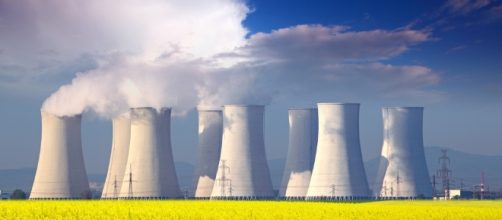THE Nuclear OPTION isn’t the start of nuclear warfare but the end of Energy issues, in theory. Nuclear Power is hotly debated and the costs often outweigh the benefits, but the need for a quicker transition to cleaner energy may be too great. What are those costs and benefits? And does history show us that nuclear power shouldn’t be used or is it greatly exaggerated?
Whether it should be used is constantly debated, but with Hinckley Point power station being authorised, officials see nuclear as a viable option.
Chernobyl and Fukushima
Nuclear power is through nuclear reactions; nuclear power is created to generate heat that in turn is used most frequently in steam turbines to produce energy within a nuclear power plant and in 2011, 10% of the worlds electricity was produced via nuclear energy.
The well-known problems with nuclear energy is how volatile and dangerous it is, the Chernobyl disaster is the most disastrous single event in nuclear history that left an entire area uninhabitable to humans for centuries, in fact the radiation levels are so high that authorities believe that the surrounding area could be uninhabitable for 180-320 years, and around the sarcophagus for approximately 20,000 years.
However, it is debated that the surrounding areas could be inhabitable from anytime between 20 – 100 years due to the uneven levels of radiation. Fukushima was the other disaster albeit the scale wasn’t as big, although there was a significant amount radiation leaked into the surrounding areas.
These disasters tend to scare people into thinking that nuclear is not the way forward however, it is the only energy available that can supply a lot of electricity, more efficient and importantly clean. But, the two main issues that need to be resolved are the safety concerns and how to dispose of nuclear waste, which both are particularly tricky subjects.
New Developments by MIT Spinoff, Transatomic Power
Transatomic Power (an MIT spinoff) are developing a nuclear reactor that they say will cut the cost of building a nuclear reactor by half, it’s an updated molten-salt reactor, this is also a type that is highly resistant to meltdowns. This means that the reactors that could be built would be significantly smaller but powerful reactors, they also modified the molten-salt reactor so that it could run on nuclear waste.
They say that it could save money because not only would it reduce the amount of steel and concrete used, but it would add safety features because it could be built in a factory as opposed to on site plus, the reactor would run on atmospheric pressure not high pressure, as is with current reactors.
In a conventional power plant water is used to cool the core, and even when the plant isn’t running, water must be continuously pumped through the system to keep it cool, the inability to be able to do this is what caused the problems at Fukushima. Molten-salt would eliminate some of the problems, in short if the reactor starts to heat up then the salt will expand spreading out the fuel and slowing the reaction, thus giving a chance for the mixture to cool.
In the event of a power outage, the stopper at the bottom of the tank melts and the fuel and salt flows into the holding tank and spreads enough to stop the reaction. The salt then cools and solidifies that encapsulates the radioactive materials.
Development and Cooperation
We have an increasing amount of options to develop to help us combat climate change, but the UK must cooperate with other nations within the EU and around the world. Society must work together to combat climate change and without innovation and investment we cannot reverse the damage that has been done to the environment and atmosphere.
The EU target is to keep emissions down to a 2% increase each year, but even with those targets we would still be set to do irreversible damage sooner rather than later.

